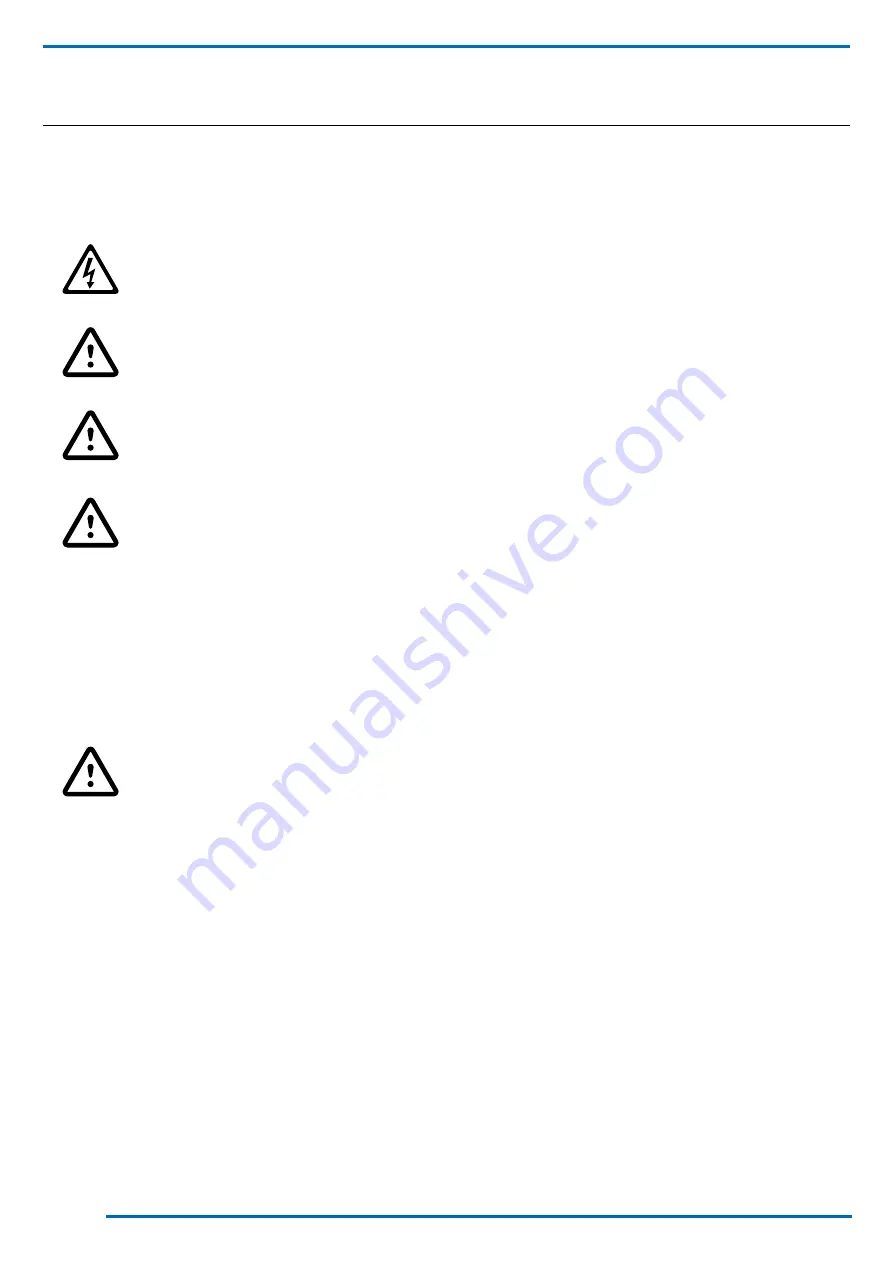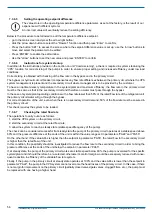
64
We reserve the right to make changes without any prior notice.
Translation from original instructions
8.2 External cleaning
The component of the unit that needs most care is the finned pack heat exchanger.
It is essential to keep it clean and free of dirt and/or deposits that can hinder or prevent air flow.
Regular cleaning of the surface of the coil is essential for the unit to work correctly and also increases the operating life of
the exchanger and the unit.
Frequent and correct cleaning of the coils contributes to considerably reducing corrosion problems.
While cleaning the finned packed heat exchanger, the electrical control panel must be closed and the main
disconnect switch must be locked in the "OFF" position.
Using a jet of water on the coil while it is still dirty will cause deposits and pollutants to remain inside the
exchanger, which will make cleaning even more difficult. All the dirt and deposits must therefore be removed
from the surface before rinsing.
For units installed in coastal or industrial areas or in areas where there are aggressive chemicals in the air,
periodic rinsing with clean water is considerably beneficial and helps counter corrosive effects.
Never clean the coils with chemicals, water containing bleach or acid or basic detergents. These detergen-
ts can be difficult to rinse off and could accelerate corrosion on the joint between pipe and fin and in areas
where different materials come into contact (Cu and Al).
8.2.1 Cleaning traditional finned coils in Cu/Al
Conventional pipe-fin coils can be cleaned with a vacuum cleaner or a brush with soft, non-metallic bristles.
Always clean in the direction of the fins and never perpendicularly to them. They can easily be bent and damaged.
Clean in the opposite direction to the normal air flow.
The coil can then be rinsed using only drinking water at low pressure (3-5 barg).
Rinsing must be carried out with a low pressure jet of water to avoid damaging the fins.
Never use jets of water or high-pressure compressed air to clean the coil. The force of the jet of air or water
could bend the fins, with a consequent increase in aeraulic head losses on the exchanger and lowering of
the performance of the unit.













































